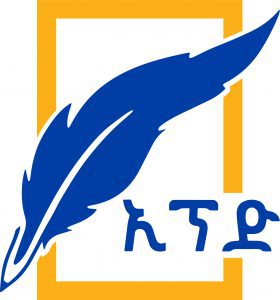
In chronology, as a passerby is no dough it is to observe to see adults to gaze and stare at Newspapers presumably adopted from the prerevolutionary generation focused on mode of production, relation of production, work force, feudalism absentee land lord, serfdom, and the motto of “land to the thriller.” This all comprises the age-long quires as the clandestine community is the vanguard of the early revolution.
Unabashedly, it was announced that those who were clandestine members at that very movement were either executed or fled the country due to circumstances though there legacy of reading remain and will continue proliferate for the posterity.
So in this article it is better to examine as to how to the Ethiopian Press Agency (EPA) and other print media are able to perpetuate history in the manner of the tenets of print media journalism and the digital ones as per the concurrent demand of the public.
In recent years, the landscape of journalism in Ethiopia has undergone significant transformation, largely influenced by the rise of digital media. As traditional print and broadcast media face challenges, digital journalism emerges as a potent force reshaping how news is produced, distributed, and consumed. This article explores the current state of digital journalism in Ethiopia and its implications for the future of press media in the country.
Digital journalism has gained momentum in Ethiopia, driven by the proliferation of smartphones and internet access. With a population increasingly connected to digital platforms, news consumption habits have shifted dramatically. Social media platforms like Facebook, Twitter, and Telegram have become primary sources of news for many Ethiopians, particularly the youth.
Digital platforms provide greater access to news, especially in remote areas where traditional media may not reach. This democratization of information empowers citizens to engage with current events. Digital journalism allows for a plurality of voices and perspectives. Independent bloggers and citizen journalists can share their stories, contributing to a more vibrant media landscape.
Speed of Reporting: Digital platforms enable real-time reporting, allowing journalists to disseminate news quickly. This immediacy is crucial in a rapidly changing political and social environment. Despite the advantages of digital journalism, traditional press media in Ethiopia faces significant challenges:
Many print media outlets struggle financially due to declining advertising revenues and increased competition from free online content. This economic strain impacts their ability to invest in quality journalism. Government regulations and censorship have historically stifled press freedom in Ethiopia. Journalists often face harassment and intimidation, which can deter critical reporting. The rise of digital media has not entirely alleviated these pressures, as authorities seek to control online narratives.
The rapid spread of information online has led to a surge in misinformation and disinformation campaigns. Journalists must navigate this landscape carefully, ensuring accuracy and credibility in their reporting.
The coexistence of digital journalism and traditional press media presents both challenges and opportunities for the future of journalism in Ethiopia.
Traditional media outlets must adapt to the digital age by embracing new technologies and platforms. This can include developing online versions of their publications, engaging audiences on social media, and utilizing multimedia storytelling to enhance their content.
Advocating for press freedom and protection for journalists is crucial. Civil society organizations, international watchdogs, and the media itself must work together to create an environment where journalism can thrive without fear of repression.
As digital journalism continues to evolve, promoting media literacy among the public becomes essential. Educating citizens about how to critically evaluate news sources can combat misinformation and enhance informed civic participation.
Digital journalism is transforming the media landscape in Ethiopia, presenting both opportunities and challenges for traditional press media. The fate of journalism in the country will depend on the ability of media outlets to adapt to changing technologies, advocate for press freedom, and engage with audiences in meaningful ways. By embracing these challenges, Ethiopia can foster a vibrant and resilient media ecosystem that serves the public interest in the digital age.
The Ethiopian media landscape is undergoing a profound transformation characterized by the rapid rise of digital journalism. While this shift presents exciting opportunities for information dissemination, it also poses significant challenges for traditional print media, including the Ethiopian Press Agency (EPA). This article delves into the contextualization of digital journalism’s influx in Ethiopia and explores strategies to sustain the historical significance and viability of print media.
The digital revolution has fundamentally altered how news is produced, consumed, and shared. In Ethiopia, increased access to the internet, particularly through mobile devices, has enabled a diverse range of voices to emerge. Social media platforms have become primary news sources, allowing for real-time updates and engagement with audiences.
As younger generations gravitate toward online news, traditional media outlets face declining readership. This shift is driven by the demand for immediate access to information, multimedia content, and interactive experiences. The Ethiopian public, particularly urban youth, is increasingly seeking news that resonates with their experiences and values.
The Role of Citizen Journalism
The rise of citizen journalism has democratized information sharing. Ordinary citizens can report news events, share opinions, and engage in public discourse. While this trend enhances plurality, it also raises concerns about the accuracy and reliability of information, necessitating a balance between traditional journalism standards and the immediacy of digital platforms. The financial challenges faced by print media are significant. Declining advertising revenues, coupled with the free availability of online content, strain the economic sustainability of traditional outlets like the EPA. As a result, investment in quality journalism, investigative reporting, and capacity building is compromised.
The Ethiopian government has historically imposed restrictions on the media, including print outlets. Censorship can deter journalists from reporting critically, leading to a homogenization of content that fails to serve the public interest. This environment poses a challenge for the EPA, which must navigate these constraints while maintaining journalistic integrity.
Many traditional media outlets, including the EPA, have been slow to adapt to digital platforms. The lack of digital infrastructure, inadequate training in new technologies and resistance to change hinder the ability to engage effectively with audiences online.
To remain relevant, the EPA should adopt a hybrid model that integrates both print and digital journalism. This approach allows for the preservation of the historical significance of print media while leveraging the advantages of digital platforms.
Exploring alternative revenue models can help sustain the financial viability of print media. Subscription Models: Develop subscription-based models for digital content, offering exclusive articles, in-depth analysis, and premium features. This can generate consistent revenue and foster a loyal readership. Sponsored Content and Partnerships: Engage in partnerships with businesses and organizations for sponsored content that aligns with journalistic integrity. This can provide financial support without compromising editorial independence.
The influx of digital journalism in Ethiopia presents both challenges and opportunities for traditional print media, particularly the Ethiopian Press Agency. By embracing a hybrid model, investing in capacity building, enhancing audience engagement, advocating for press freedom, and diversifying revenue streams, the EPA can sustain its historical significance while adapting to the evolving media landscape. As Ethiopia navigates this transformation, the preservation of quality journalism remains paramount for fostering an informed and engaged citizenry.
BY LAKACHEW ATINAFU
THE ETHIOPIAN HERALD FRIDAY 21 MARCH 2025


